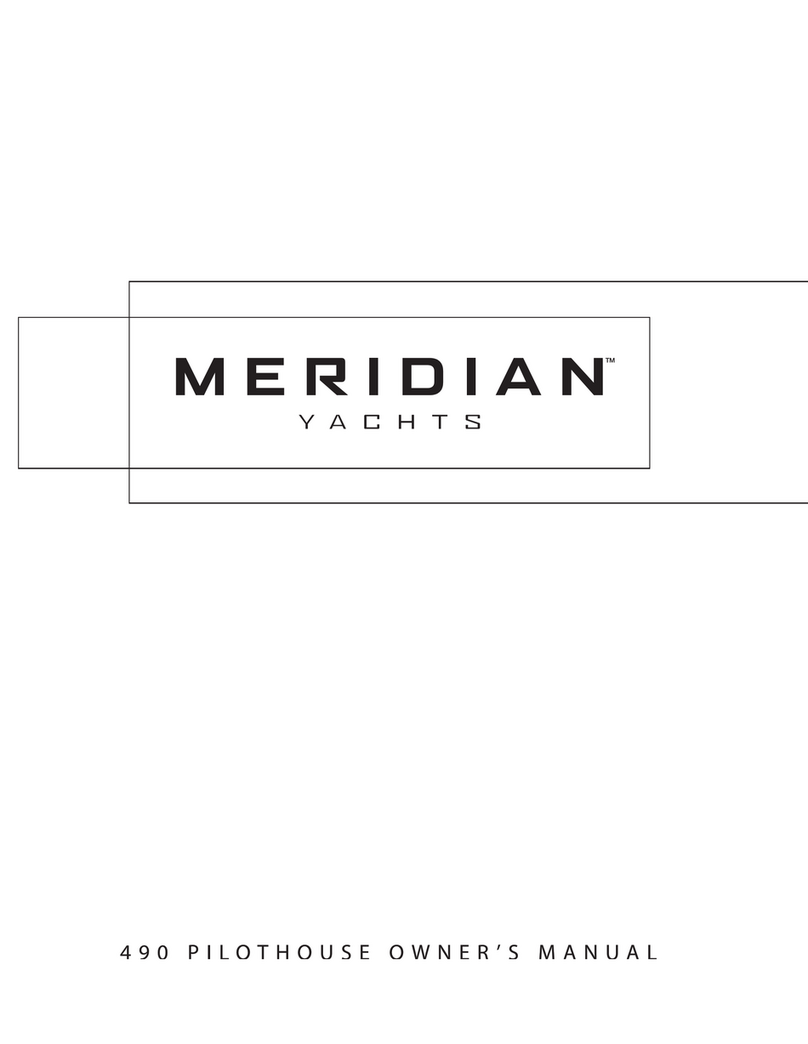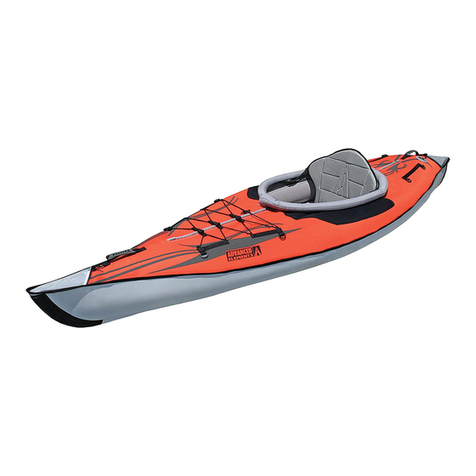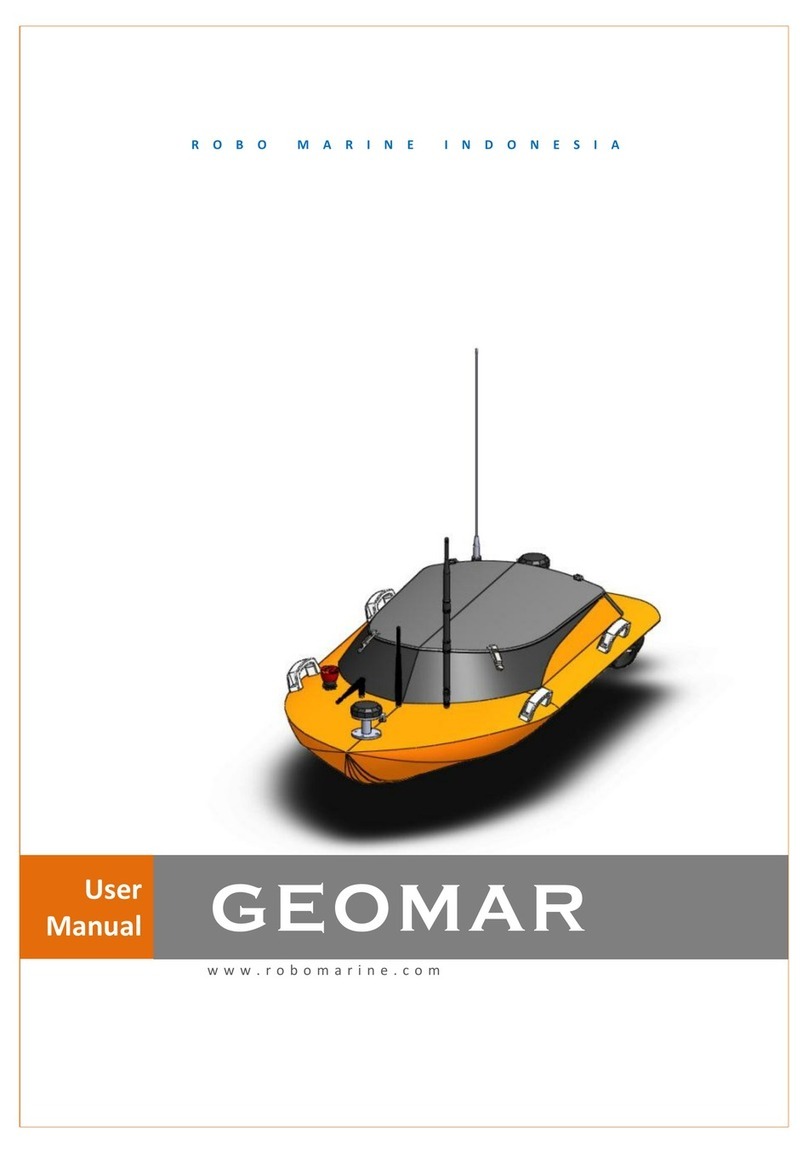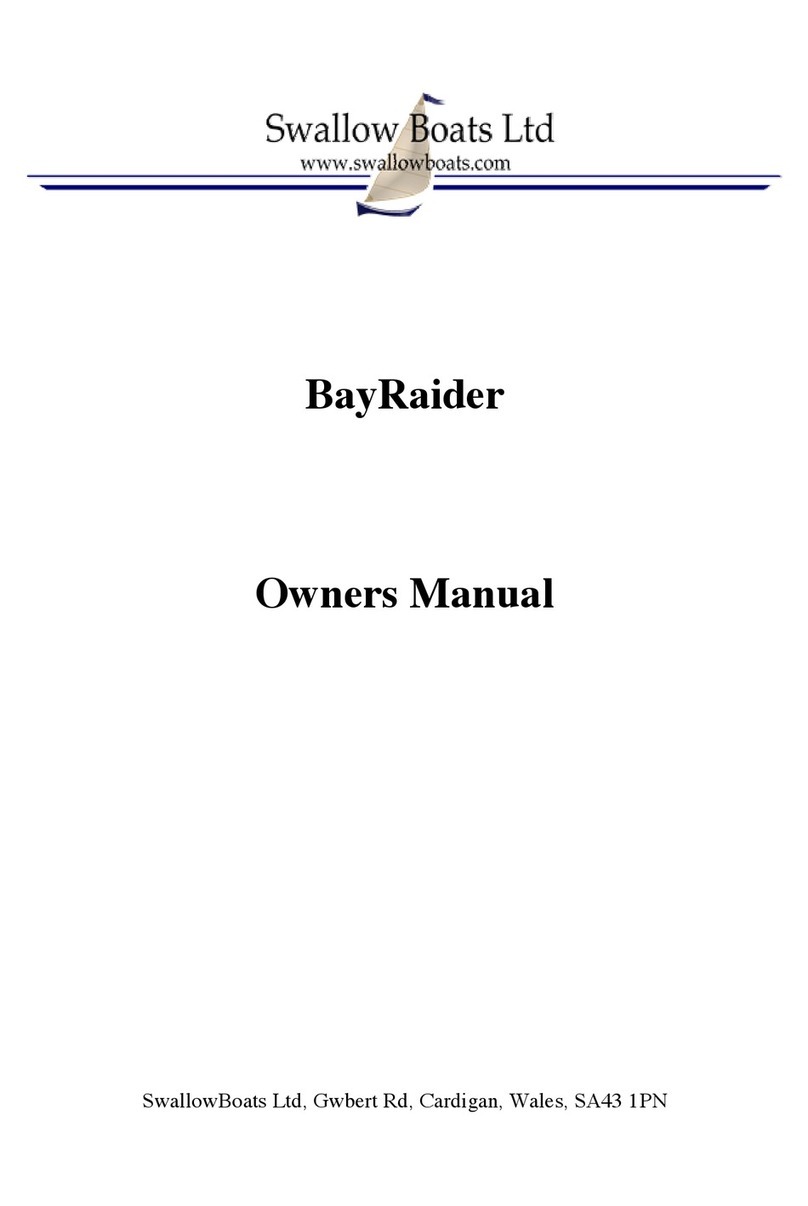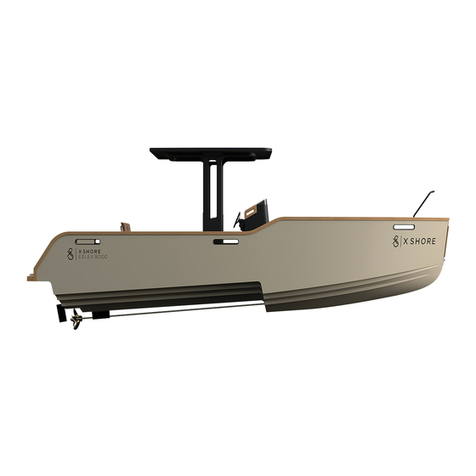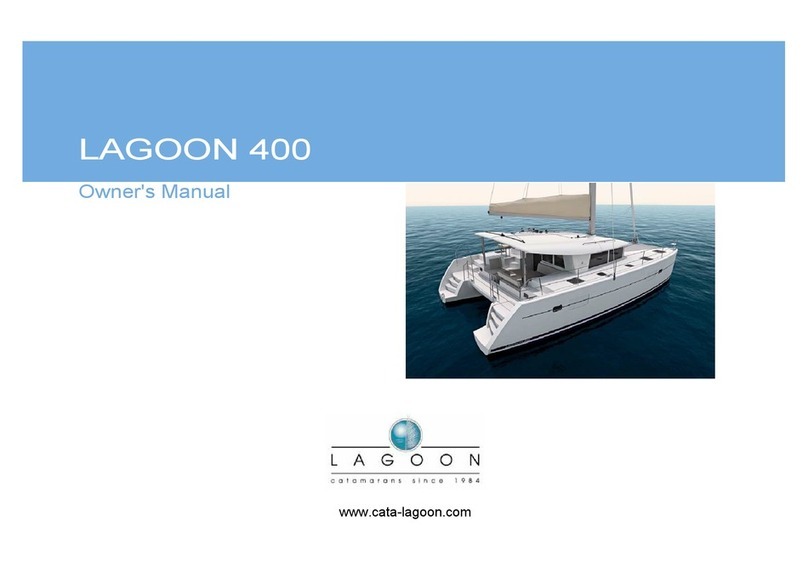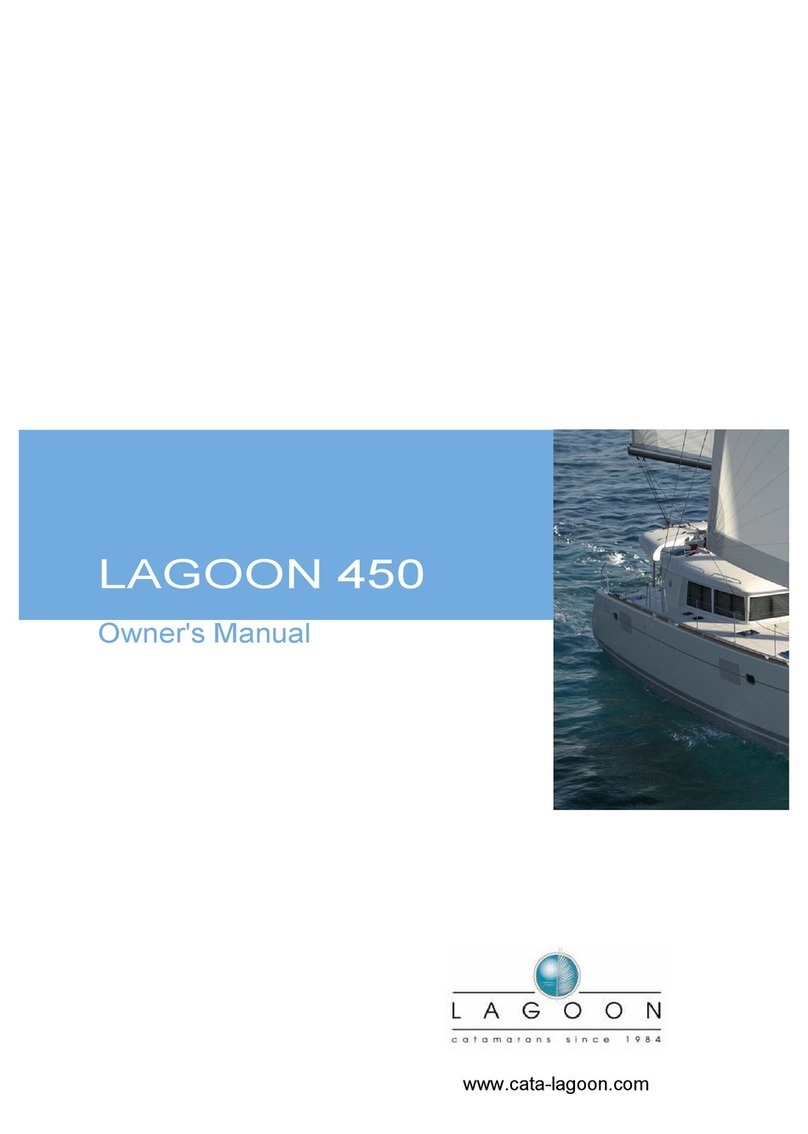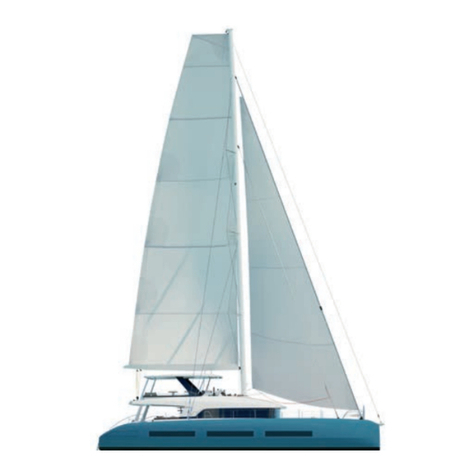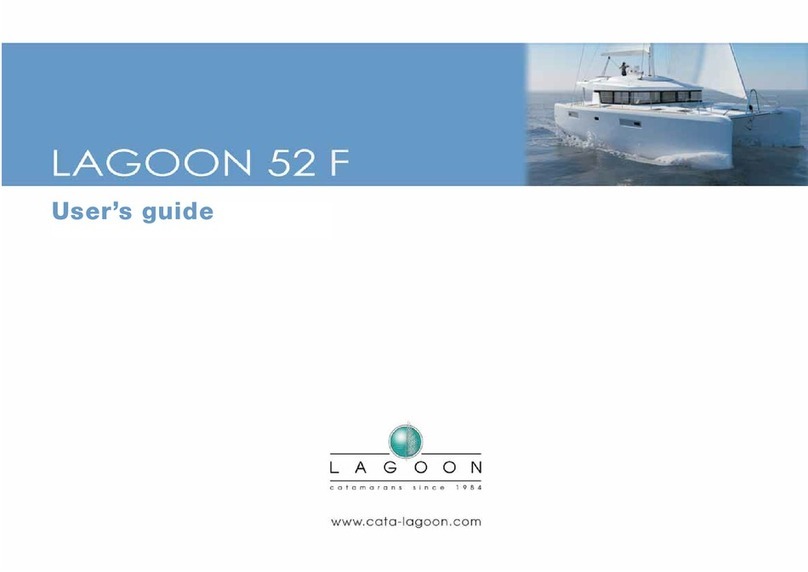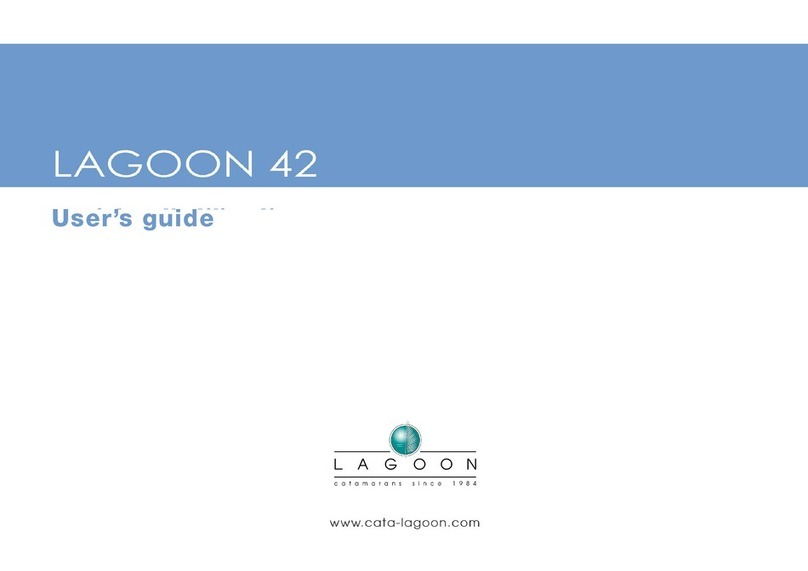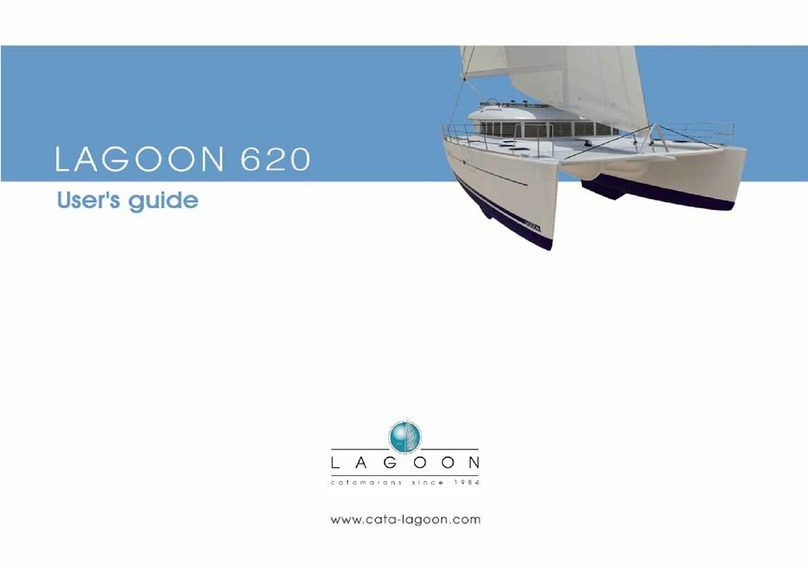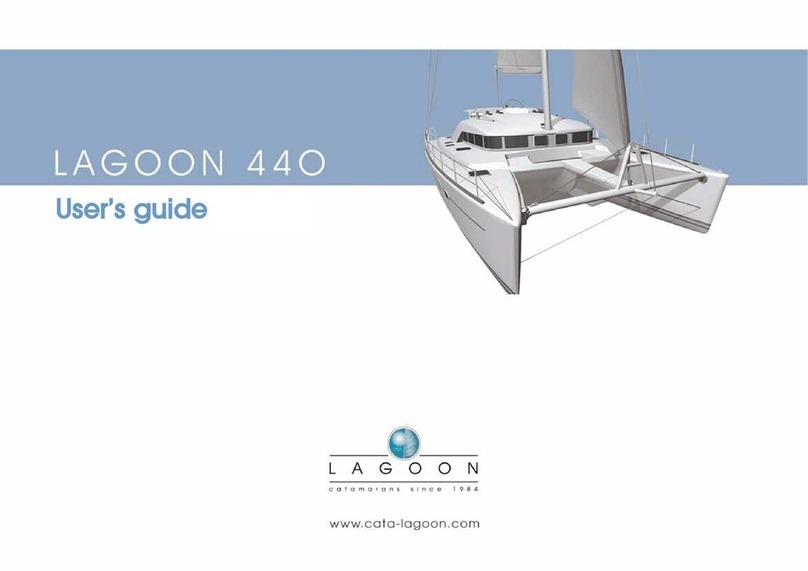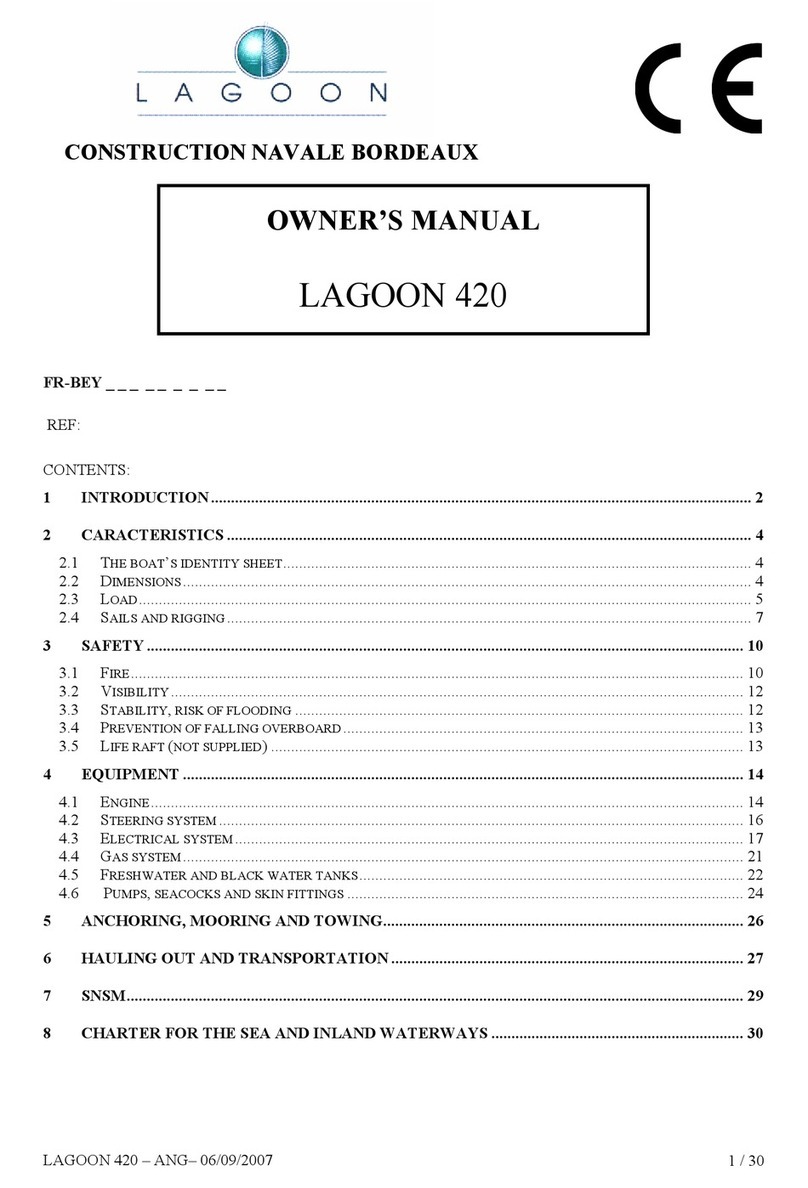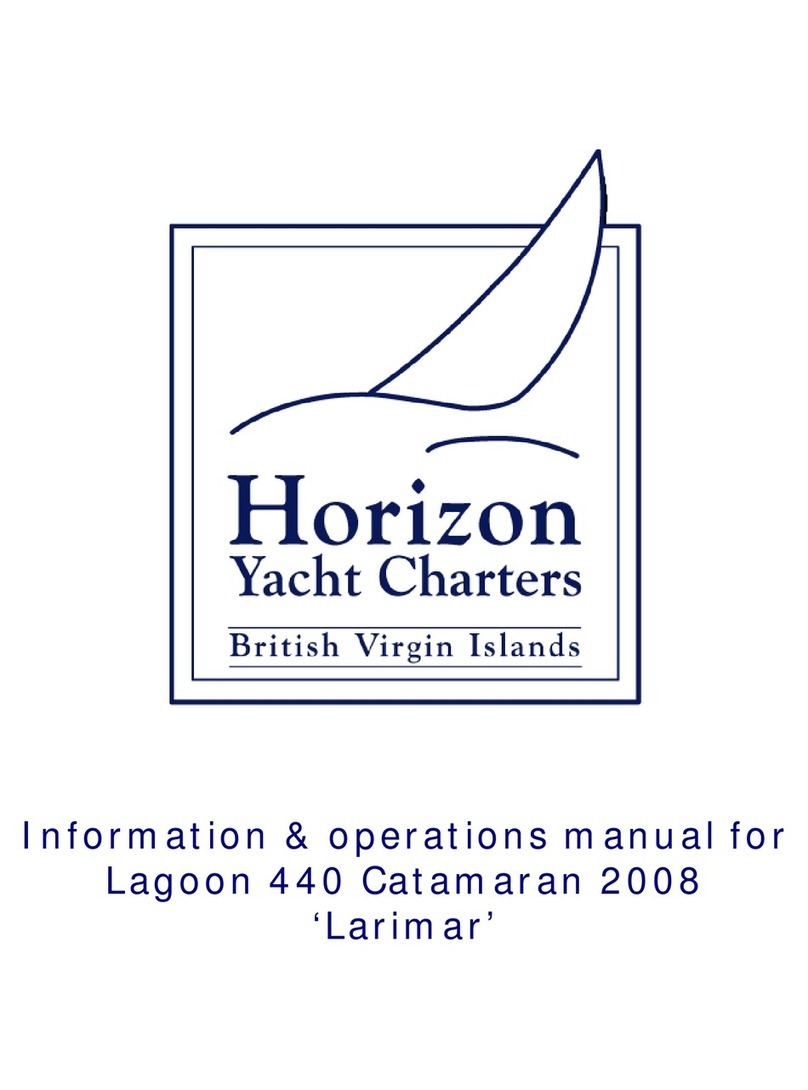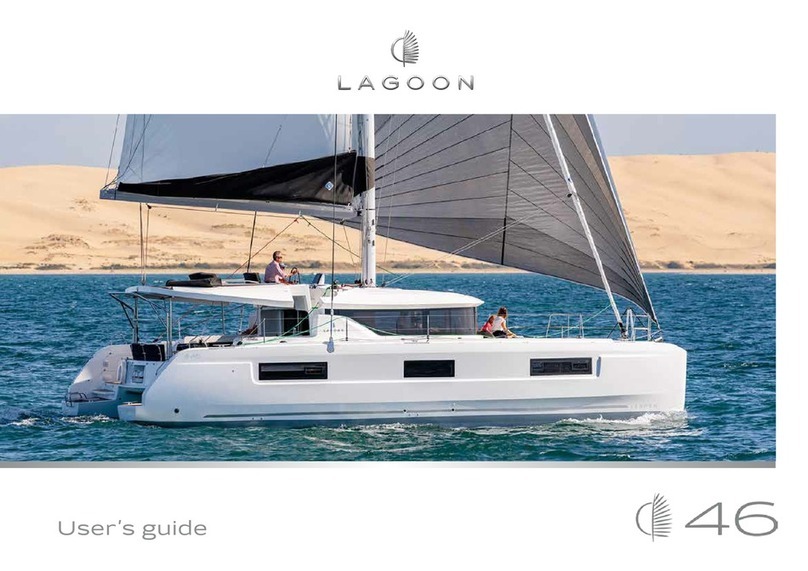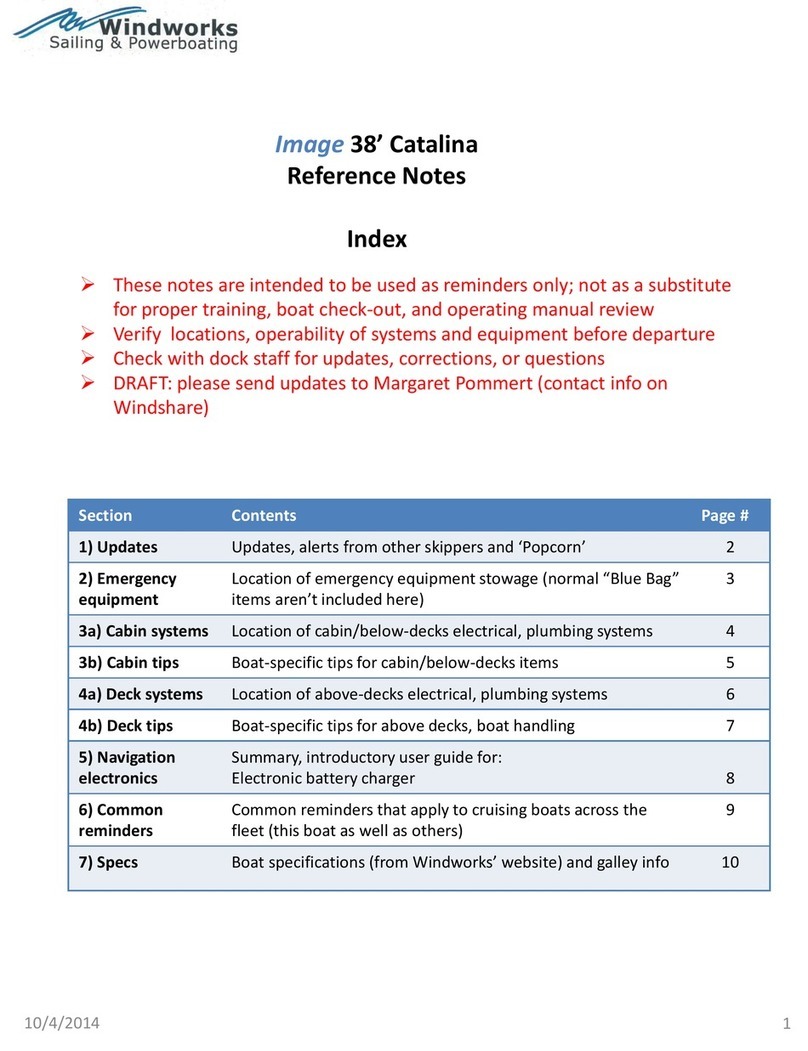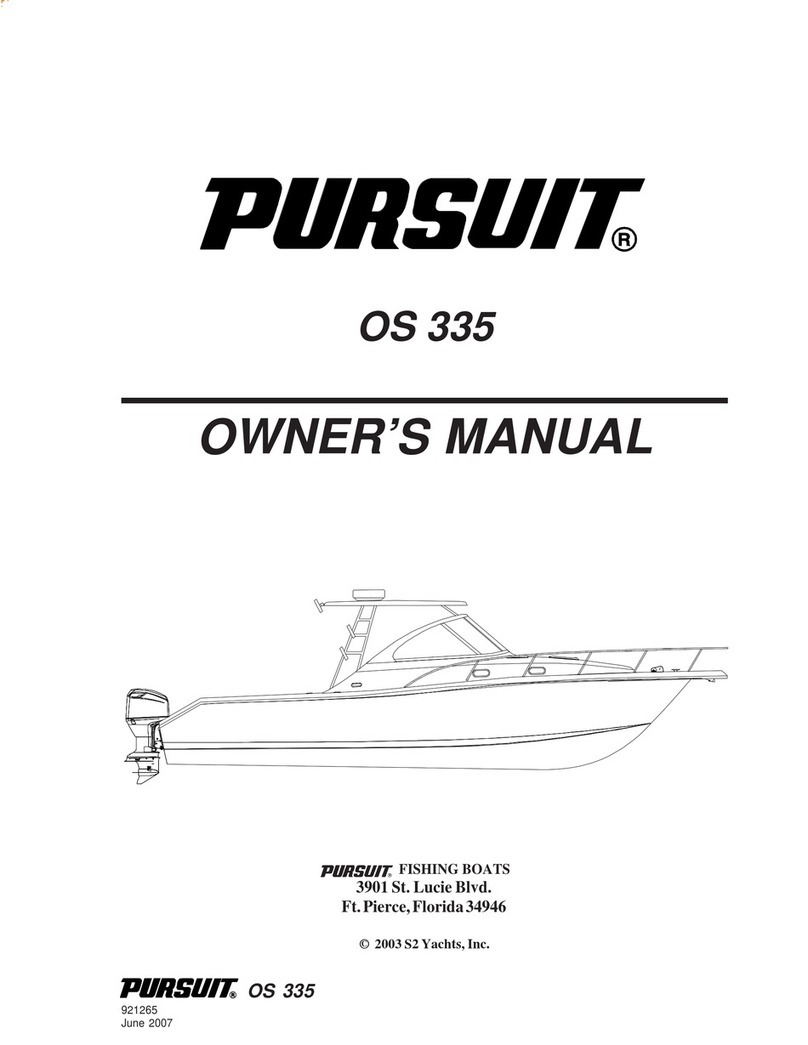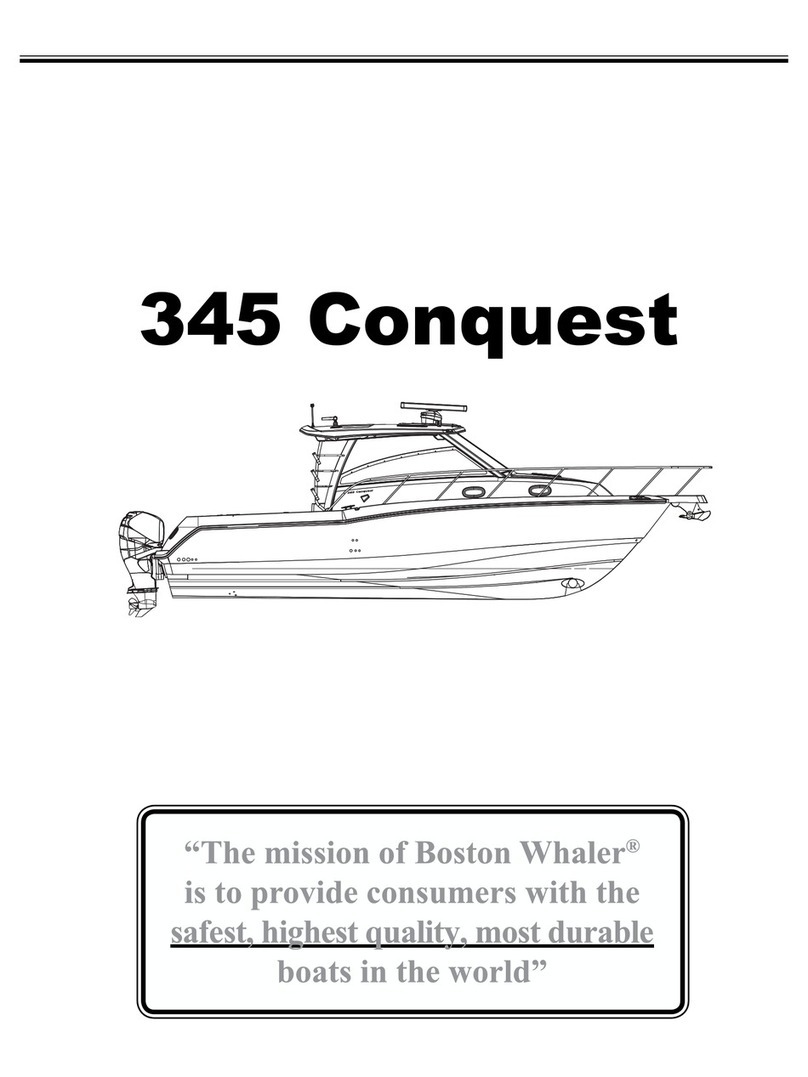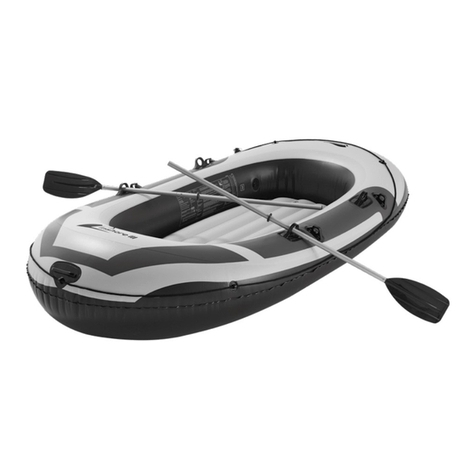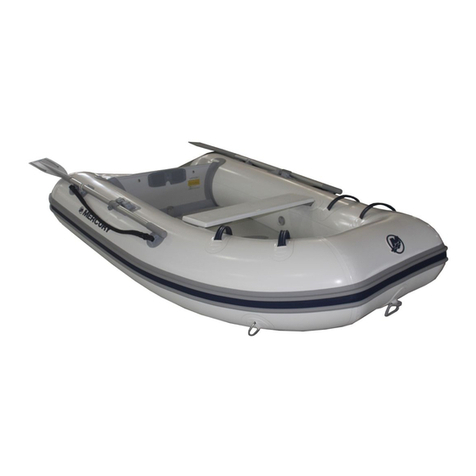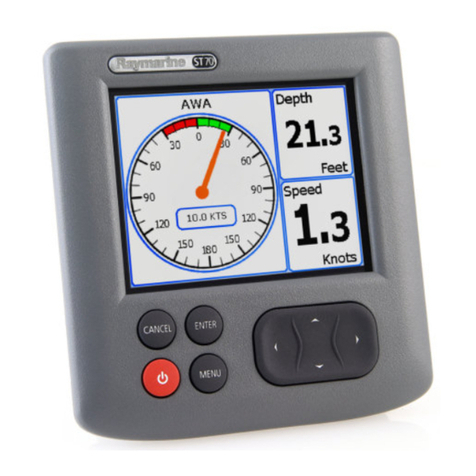The sea and the water are not Man's natural environment and we must
respect its laws and its strength.
Adapt the use of your boat to her condition, which deteriorates with time and
use.
Any boat, however well built, may be severely damaged if badly used. This is
not compatible with safe sailing. Always adapt the speed and direction of your
boat to the sea conditions.
The 'COLREG' international regulations for the prevention of collisions at sea,
published by the International Maritime Organization, specify the rules relative
to steering and courses, navigation lights etc. throughout the world.
In many countries, a licence, an authorization or training certificate will be
required.
Make sure you have the necessary legal authorization before you use your
boat.
Always ensure an experienced professional carries out the maintenance of
your boat, installs any accessories and the makes any small modifications.
The written authorization of the builder or his legal representative is
compulsory for modifications that alter the specifications of the boat, in
particular the vertical arrangement of forms (installing a radar, modifying the
mast, changing the engine, etc.).
Users of the boat are advised that:
- The entire crew must be properly trained.
- The boat must not carry a load heavier than the maximum load
recommended by the builder, in particular the combined weight of food
supplies, equipment not supplied by the builder and people on board. The
weight carried by the boat must be properly distributed.
- The water in the bilge must be maintained at a minimum.
- Stability is reduced when you add weight to the upper sections.
- In the event of heavy weather, the hatches, lockers and doors must be closed
in order to minimize the risk of water entering the boat.
- Stability may be reduced when towing another boat or when lifting heavy
weights using the davits or the boom.
- Breaking waves are a serious danger to stability.
- If your boat is equipped with a liferaft, read the instructions carefully. All the
proper safety equipment must be carried on board (harnesses, flares, liferaft,
etc) according to the type of boat, the country in which it is used, the weather
conditions, etc.
- The crew must be familiar with the use of all the safety equipment and all
emergency safety procedures (MOB, towing etc.).
- All people on deck must wear a life jacket or a buoyancy aid. Please note that
in some countries it is compulsory to wear an approved buoyancy aid at all
times.
Keep this user's guide in a safe place and pass it on to the
new owner if you sell the boat.
For essential or optional equipment (engine, electronics
etc.) refer to their respective manuals supplied with your
boat.

